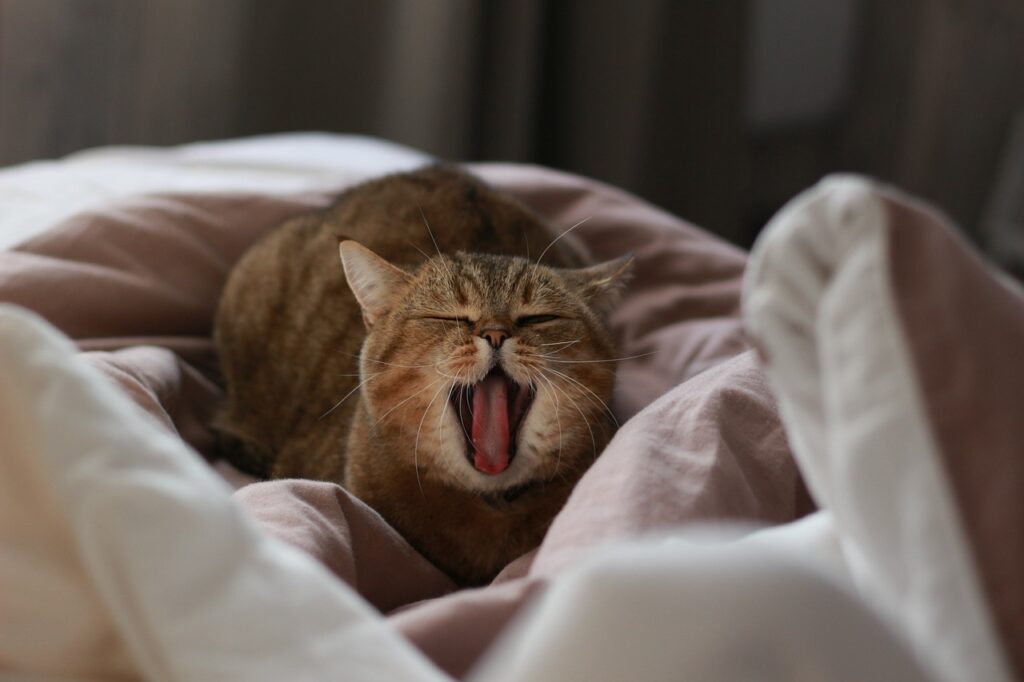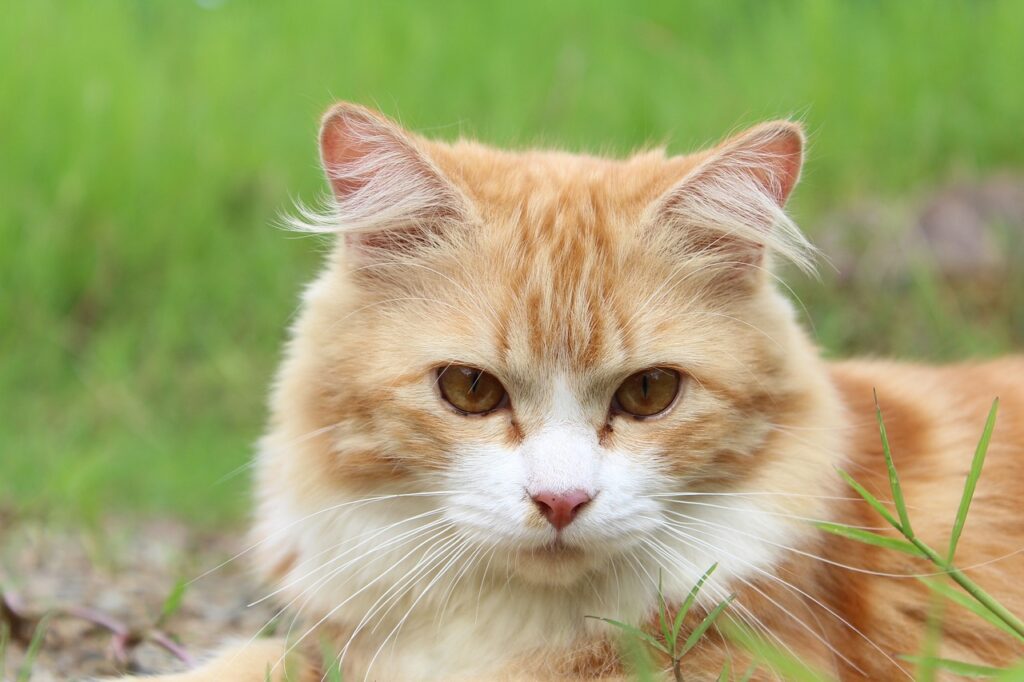Can Cats Eat Lettuce? – Yes, They can
Lettuce can be a refreshing treat for cats, particularly on a hot day. This leafy green is teeming with water and can help hydrate your playful companion. Unlike some human foods that are off-limits to our feline friends because of potential toxicity, lettuce is safe for cats to eat in moderation. Just like humans benefit from veggies in their diet, a little bit of lettuce can be incorporated occasionally as a low-calorie snack for cats.
Can Kittens Eat Lettuce?
Yes, with caution. Like adult cats, kittens can also nibble on lettuce. However, since kittens have delicate digestive systems, it’s essential to introduce them to new foods slowly. Lettuce lacks the necessary nutrients for a growing kitten, so it should not take the place of specially formulated kitten food that supports their development. Instead, think of lettuce as a small, occasional treat rather than a staple of their diet.
Things to consider when feeding lettuce to kittens?
Always start with a small piece and observe your kitten for any signs of digestive upset. Lettuce should also be thoroughly washed to remove any chemicals or pesticides. It’s best to skip the dressing, as many common ingredients in salads are not feline-friendly. Remember, a kitten’s main source of nutrition should come from their regular food, and treats like lettuce should be just that – a treat.
Nutritional Benefits of Lettuce for Cats – Why Lettuce is Good for Cats?
Hydration Boost
Lettuce is mostly water, which makes it an excellent snack for contributing additional hydration to your cat’s diet, especially during the warmer months or if your cat is prone to ignoring their water bowl.
Fiber Content
Fiber in lettuce can aid in digestion and help prevent hairballs by moving hair through the gastrointestinal tract. Still, it should be given sparingly to avoid any potential issues such as diarrhea.
Low in Calories
Obesity in cats is a real concern, so the low-calorie nature of lettuce is ideal for a guilt-free treat. It allows your cat to enjoy a crunchy snack without significant calorie intake.
Vitamins and Minerals
Although not a significant source of nutrients for cats, lettuce does contain some vitamins and minerals, such as vitamin A, vitamin K, and potassium, that contribute to overall health in small amounts.
Novelty and Stimulation
The different textures and mild taste of lettuce can offer sensory enrichment for your cat, making it a novel snack that can encourage natural exploratory behavior.
Potential Allergies: Can Cats Be Allergic to Lettuce?
It’s quite uncommon for cats to be allergic to lettuce. Still, they can develop allergies to any type of food. If you are introducing lettuce, do so in small amounts and watch for any adverse reactions.
Symptoms of Lettuce Allergies in Cats
- Gastrointestinal Distress: If your cat experiences vomiting or diarrhea after eating lettuce, they might be intolerant or allergic.
- Skin Irritation: Rarely, a cat might develop an itchy rash or hives. Monitor your cat’s skin for any unusual changes post lettuce-munching.
- Respiratory Issues: In extremely rare cases, allergies could manifest in the form of coughing, wheezing, or other breathing difficulties.
What to Do If Your Cat Shows Symptoms?
- Stop feeding lettuce: Eliminate lettuce from your cat’s diet immediately if any symptoms develop.
- Consult a vet: Always visit the veterinarian to determine the cause of the reaction and get professional advice.
- Monitor Your Cat: Keep an eye on your cat’s overall health and any signs that may indicate a reaction to food or environmental factors.
Recommended Amount: How Much Lettuce Can a Cat Consume?
Stick to a small piece of lettuce as a treat now and then. The majority of your cat’s diet should consist of complete and balanced cat food. Treats like lettuce should not make up more than 10% of their daily caloric intake.
Things to Consider When Feeding Lettuce to Cats
Always ensure the lettuce is clean and free from dressing or dips that contain ingredients harmful to cats, such as onions or garlic. Chop the lettuce into manageable pieces to prevent any choking hazard.
How to Feed Lettuce to Cats: A Quick Guide
Lettuce might not be a cat’s first choice, but it can be a fun addition to their diet. The cool, crispy leaves can be intriguing for our feline friends and provide a unique texture for them to enjoy.
Lettuce Leaf Toppers
Simply place a few small pieces of clean, chopped lettuce on top of your cat’s regular food. It’s a simple way to introduce them to the new texture and taste.
Hydration Boost Salad
Combine finely chopped lettuce with your cat’s regular wet food for an extra hydration boost. Ensure that the pieces are small enough to prevent any choking risk.
Cooling Lettuce Crunch
Freeze a small lettuce leaf and give it to your cat as a cool treat on a hot day. It’s refreshing and provides hydration, but remember, only in moderation.
Conclusion
Lettuce can be a safe, enjoyable treat for your cat when given appropriately. It should be clean, plain, and offered in small quantities alongside a nutritious and balanced diet. Observe your cat for any reactions after offering lettuce and always consult with your vet if you have concerns about your pet’s diet or health. Introduce any new treat gradually and enjoy the process of discovering what tickles your feline’s taste buds!



